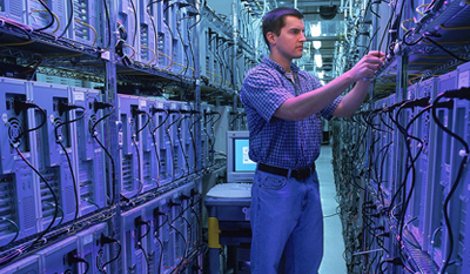Rackspace is adding a new dynamic to its cloud infrastructure, introducing new servers designed to offer more memory and I/O (input/output) for customers wanting to handle more data intensive applications.
Rackspace VP of technology Nigel Beighton said the hosting cloud provider is reacting to a maturing cloud market, which is leading to more companies putting larger applications into the Cloud.
“We are changing the underlying server architecture, shifting from small to medium servers to very large servers with significant performance increases,” Beighton said.
He said as more companies get used to dealing with apps in the Cloud, more are requesting the use of an entire server, instead of a slice, which has typically been the way cloud deployments have worked.
“In the last six months we have seen an increase of 200% in customers taking this whole server, not because they are anti-social, but because they want the memory and they want to do things like large-scale NoSQL databases like MongoDB and Cassandra” Beighton said.
“It is all about disc I/O – they can increase their performance by using our new server by 132 times.”
Rackspace is still building its servers in line with Open Compute reference architectures and will still contribute their new server reference architectures to the group, leaving it open for other cloud providers interested in taking a similar approach.
The servers Rackspace is building will include four times more RAM, two times more CPU performance, 132 times more I/O throughput and 8.3 times more total network bandwidth, with 2.56 times more total overall performance, Rackspace said.
Rackspace is calling its servers Performance Cloud Servers is designing them with Intel Xeon E5 processors, up to 120Gb RAM, 40Gbps of network throughput.
They will also include RAID 10-protected solid-state disks (SSDs) and Beighton said this is in line with Rackspace’s plans to move most of its cloud storage on to the storage technology.
“This is also about the I/O,” Beighton said. “You don’t want the database competing for the I/O, you want as much disc write as you can get, especially on to the SSD, so we are switching our cloud to be all SSD, spinning disc will be used for archiving and backup.”
Beighton said its refresh will not affect its underlying cloud infrastructure, which is based on the open source cloud computing software OpenStack.
“We just drop in these new servers in and the Cloud software just deals with it – there is no major shift,” Beighton said.
Rackspace has already rolled out its new infrastructure for its Performance Cloud service offering in Northern Virginia and will start rolling out the service in Dallas and Chicago over the next couple of days. London will come online with Performance Cloud in some time later in the month and Sydney and Hong Kong will follow in the first half of 2014.

